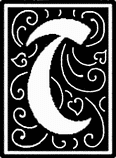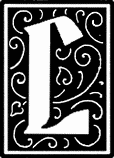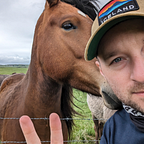Allegory
All About Animals: Genesis 8 and Beyond
Biblical animals and their spiritual significance in scripture
Decoding Animal Symbolism in Genesis
Section Takeaway: The Creator often uses animals in the Bible to teach
us important lessons about life. Why does the Creator like animals so much? A quick search reveals over 48 different types of animals mentioned throughout the scriptures.
Why does the Creator like animals so much? A quick search reveals over 48 different types of animals mentioned throughout the scriptures.
Throughout history, animals have played active roles in prophecies, sacrifices, and daily life, highlighting their embedded importance in the fabric of civilization.
From domestic animals, birds, wild beasts, creepy crawlies, sea creatures, to straight-up-monsters, the Bible has something fun for everyone!
But beyond their physical characteristics, animals in the Bible often mirrored the human experience of the time.
The Creator loves animals, and he loves talking to us through animals.
Background
Section Takeaway: Scriptures can be read for deeper meanings
or taken at face value. There are different ways to read and interpret the scriptures: allegorical (parables) and literal (face value). And both are important to a well rounded faith and connection to the Creator.
There are different ways to read and interpret the scriptures: allegorical (parables) and literal (face value). And both are important to a well rounded faith and connection to the Creator.
As an example, the serpent in the Garden of Eden can be seen allegorically as a symbol of temptation and deceit. Literally, serpents are common creatures often associated with both danger and, in some cultures, wisdom.
Flight Patterns of Faith: Why Noah’s Raven Left Him High and Dry
Section Takeaway: Noah's dove symbolizes hope, while the
raven's departure hints at ill omens based on their natural
behaviors. Within the book of Genesis, Noah uses birds to find land after the flood. Allegorically, the white dove represents hope. In contrast, the black raven is often interpreted as foreboding.
Within the book of Genesis, Noah uses birds to find land after the flood. Allegorically, the white dove represents hope. In contrast, the black raven is often interpreted as foreboding.
The dove returned, but the raven took off, seemingly saying “see ya!” Good luck with your boat Noah! Mysteriously, ravens have become seen as ill omens.
But why would the dove come back with the branch? Why did the raven not come back?
In the literal sense, the dove is known for eating seeds, nesting in trees, flying faster and farther than ravens, and operating better than the raven when alone.
The ravens on the other hand, are slower, typically nest on cliffs, prefer to eat meat, and work better in pairs or groups.
So does the dove really represent hope?
Or does Noah, the caretaker of animals, represent using the raven in the wrong way?
The raven’s decision to not return and the dove’s eventual return with a branch might signify deeper underlying messages on natural behaviors.
Laughing at the Zoo: When Hippos Go Biblical!
Section Takeaway: The Creator wants us to enjoy animals and learn
from them, either through laughter or deeper reflection. The Creator wants us to laugh and enjoy His creations. It’s not good for the soul to be serious all the time. People don’t need theological lectures at every turn.
The Creator wants us to laugh and enjoy His creations. It’s not good for the soul to be serious all the time. People don’t need theological lectures at every turn.
Sometimes people go to a zoo and just look at the animals, occasionally stopping to laugh at a hippo going to the bathroom in a funny way.
But sometimes people go to a zoo and read every sign, to learn about why an animal does what it does. A lion in a zoo can teach us about the complex nature of the food chain, while the biblical story of Daniel in the lion’s den offers lessons on faith, trust, and divine intervention.
Which is right? Which is wrong?
It doesn’t matter that it was the dove that returned, while the raven did not. What matters is that animals are fun, and have their own purpose in His world.
So, let’s laugh at some hippos in the Creator’s zoo.
And maybe we will catch a whiff of philosophy along the way.
Creature Chronicles: Finding Faith in Beasts
Section Takeaway: Animals in the Bible teach us different lessons,
helping us connect more with the Creator. Animals inspire people. To one person, a dragonfly could mean to be stalwart, as they can fly in the rain. To another, the dragonfly could be a reminder to have a shiny personality, as dragonflies are iridescent.
Animals inspire people. To one person, a dragonfly could mean to be stalwart, as they can fly in the rain. To another, the dragonfly could be a reminder to have a shiny personality, as dragonflies are iridescent.
The point isn’t to determine the right or wrong interpretation, but rather to reflect on His creatures, and using that reflection to strengthen our relationship with the Him.
Similar to my more theological article on the gifts of the spirit, I will list all the animals I was able to find, and bold the ones we will talk about specifically.
Experience this article like you would if you were at a zoo. Some may skim and look at pictures, others will stop and read.
Domestic Animals:
1. Sheep
2. Goats
3. Cattle (Oxen, Cows)
4. Donkeys
5. Horses
6. Camels
7. Dogs
8. Cats (implied, but not mentioned directly, Egypt)
Birds:
9. Sparrows
10. Doves
11. Eagles
12. Ravens
13. Crows
14. Quail
15. Peacocks
16. Pigeons
17. Roosters
18. Owls
19. Hawks
20. Swallows
Wild Animals:
21. Lions
22. Bears
23. Foxes
24. Deer
25. Gazelles
26. Wild Ox (Unicorn in KJV)
27. Leopards
28. Wolves
29. Hyenas (implied)
Creeping and Small Animals:
30. Snakes (Serpents)
31. Frogs
32. Locusts
33. Lizards
34. Spiders (mentioned as “spider’s web”)
35. Ants
36. Bees
Sea Creatures:
37. Fish
38. Leviathan (a sea monster)
39. Whales (in some translations)
Unclean Animals:
40. Pigs
41. Bats
42. Vultures
43. Camels (considered unclean to eat)
44. Hares
Fantastical or Symbolic Creatures:
45. Behemoth (a monstrous land creature)
46. Cherubim (a class of heavenly creatures)
47. Seraphim (another class of heavenly creatures)
48. Dragon (symbolic creature mentioned in Revelations)
Biblical Beasts: Creation, Symbolism, and Faith
Section Takeaway: Zoos and scriptures show us animals and their
deep biblical meanings, even if we've never seen them. People like zoos, as they have been around for thousands of years in some shape or form. But even if we can’t get to a zoo today, we have the scripture and its literary zoo to inspire us.
People like zoos, as they have been around for thousands of years in some shape or form. But even if we can’t get to a zoo today, we have the scripture and its literary zoo to inspire us.
There are accounts of English Anglo-Saxon Christians in the 700s that had no idea what a lion was, only that it was a beast they read about in the Bible. They didn’t have access to a zoo with a lion, so the scripture served as the zoo.
Take the eagle. The eagle in the Bible is often associated with renewal and hope.
In Isaiah, it’s says, “Those who hope in the LORD will renew their strength. They will soar on wings like eagles.” This bird’s ability to fly high and its keen vision symbolize the spiritual insight and the promise of rejuvenation found in Isaiah.
But even if the person reading the verse has never seen an eagle, they are left with a layered impact of the eagle.
Another example from art, the dove, remains a constant symbol of the Holy Spirit, peace, and purity. At baptisms, the imagery or presence of doves is used to signify the Holy Spirit’s descent and the purification of the baptized soul.
Did the Creator want Noah to use the dove because it most closely matched what humans would interpret the Holy Spirit to look like?
No idea! But doves look like bleached pigeons!
Noah’s Oversight: Raven vs. Dove
Section Takeaway: Animals in the Bible show the Creator's design,
like how ravens communicate and the symbolism of the dove
in Noah's story. Looking at the Creator’s animals, we feel awe, wonder, or depending on where you fall in the “hippo poo storm” situation — disgust. We can observe the diversity in the physical characteristics of the Creator in animals.
Looking at the Creator’s animals, we feel awe, wonder, or depending on where you fall in the “hippo poo storm” situation — disgust. We can observe the diversity in the physical characteristics of the Creator in animals.
We can also view the characteristics of the animal and how it interacts with the ecosystem, a grand design of the Creator.
Think back to the raven and the dove: physically, the differences between the two are quite literally, black and white.
But once we delve deeper into how each of these birds interact with its ecosystem, we see mistakes Noah made.
How would the story have changed if Noah had released both ravens instead of just one? Since Ravens depend on each other to fly and communicate, would a pair of ravens have replaced the symbol of hope that the Dove now holds?
What if the symbol of hope was two ravens working together, instead of one single dove? Or does that not work because two ravens wouldn’t match the appearance of the Spirit?
We have the scriptural examples of Noah, but scientists like Bernd Heinrich more recently discovered in the 20th century that ravens have complex vocal communication between each other.
What We Learn from Ravens Today
Section Takeaway: Ravens are clever team-workers;
their skills offer insight into Noah's story. Bernd studied raven recruitment and found that ravens will seek other ravens to help with a large task. He also discovered that ravens have a long memory, and indications that ravens can plan for the future.
Bernd studied raven recruitment and found that ravens will seek other ravens to help with a large task. He also discovered that ravens have a long memory, and indications that ravens can plan for the future.
Raven problem solving skills indicate a measure of foresight, including recorded evidence of deception among other ravens!
Ravens herald ill omens, while people symbolize doves as hope. Let’s draw conclusions from our knowledge of ravens in modern times and apply them to the story of the flood in ancient times.
- First, is that the Creator wanted Noah to send out the raven first.
- Second is that the raven didn’t die, as eventually the second raven was sent out (and we still have ravens today, so they must have made baby ravens).
- Third, is that we can assume the raven didn’t return because it had found land, using its intellect and foresight to secure a place to live.
- Fourth, is that the Creator wanted us to recognize something deeper about the raven, and his interaction with Noah (humans).
Fun Times With Animals — Zoological Interlude 1:
In the Book of Job, the “Behemoth” and “Leviathan” are described in detail, believed by many to be a hippopotamus and crocodile respectively. Their grandeur and might serve as a reminder of the Creator’s unparalleled power and the marvels of His creations.
In Proverbs 6:6, Solomon points to the ant as an exemplar of hard work and preparation, “Go to the ant, O sluggard; consider her ways, and be wise.”
Many Christian communities today adopt the fish as a symbol, derived from the early Christian era when it was an acronym for “Jesus Christ, Son of God, Savior.” Its present-day relevance reminds believers of their historical roots and the importance of community.
The ox, often paired with the donkey in the Bible, teaches us about bearing burdens and serving faithfully. In the New Testament, Jesus says in Matthew 11:30, “For my yoke is easy and my burden is light.”
Uniqueness by Design: From Ostriches to Believers
Section Takeaway: Animals show diverse designs,
just as people have varied gifts and roles. Animals offer enjoyment and provide a way to behold the Creator’s majesty in two aspects.
Animals offer enjoyment and provide a way to behold the Creator’s majesty in two aspects.
In Job 39:13–18, the scripture describes the ostrich, known for its lack of wisdom. Yet despite its flaws, it’s uniquely designed to run swiftly. In spite of our imperfections, the Creator has equipped each of us with unique skills and gifts for our environments.
When we study animals and their physical characteristics, we understand that the Creator made them that way for a reason. But often we ignore that the He also made humans different for a reason.
The Creator didn’t make just one bird. He didn’t make only one cloven hooved animal. And the Creator certainly didn’t only make one type of human.
It’s okay for believers to attend churches of different styles. The Creator has adapted them to fit their environment, like he adapted animals to fit their environment.
Believers, regardless of their denominational backgrounds, are called to serve willingly and bear each other’s burdens.
Schools of Belief: Navigating Faith’s Diverse Waters
Section Takeaway: Like fish in varied waters,
believers thrive in diverse church communities. Think about fish. Fish rely on a community. Believers, reminded by how fish move in schools, should understand the importance of fellowship and community.
Think about fish. Fish rely on a community. Believers, reminded by how fish move in schools, should understand the importance of fellowship and community.
Can’t different denominations of churches be seen as various schools of fish? Each with its unique way of living in different types of water — freshwater, saltwater, cold, or tropical?
Just as different fish thrive in different waters, so do believers thrive in different spiritual environments. This diversity in worship and practice allows the broader Christian community to reach a wide array of people, for the ocean is vast.
Ask yourself if there was a believer you knew that might have been judged harshly because of the way the Creator adapted them to their environment?
Sorry! I said I wasn’t going to do a lecture and I did. Let’s do another fun animal interlude.
Fun Times with Animals — Zoological Interlude 2:
The patience of a mother bear is alluded to in Proverbs 17:12: “Better to meet a bear robbed of her cubs than a fool bent on folly.” This can remind us of the deep passion and commitment that comes with genuine love and caring, as well as the importance of wisdom.
The deer, especially as referred to in Psalms 42:1 — “As the deer pants for streams of water, so my soul pants for you, my God”, can symbolize a soul’s yearning for spiritual sustenance.
The rooster’s crowing is referred to in Mark 14:72, when Peter denied Jesus three times before the rooster crowed. It serves as a reminder of the consequences of our actions and the fulfillment of Creator’s word. We can learn about repentance and redemption from this account.
The horse is mentioned in Proverbs 21:31: “The horse is made ready for the day of battle, but victory rests with the Lord.” This can teach that while preparation and effort are essential, ultimate success or victory comes from trusting and relying on the Creator.
Conclusion: Animals as Storytellers
Section Takeaway: Animals reveal the Creator's humor and lessons,
like a hippo's poo storm. Animals are neat. We began by asking why the Creator cherishes animals so deeply. Now, we recognize that they show the Creators diversity not just in physical creation.
Animals are neat. We began by asking why the Creator cherishes animals so deeply. Now, we recognize that they show the Creators diversity not just in physical creation.
They also allegorically represent His creative diversity through their engagement with their ecosystems.
It’s evident that the Creator not only delights in the physical aspects of animals but also employs them as parables, teaching us about hope, collaboration, diversity, fear, and even humor.
Whether you visit to look at the animals doing funny things like a hippo creating a poo storm, or read all the information to learn about why the hippo sprays poo, understand that:
- The Creator has a plan
- We don’t know the plan
- We can behold its grand design (yes even a poo storm)
It’s clear that animals aren’t merely passive inhabitants of our world; they’re dynamic storytellers, each echoing a part of the Creator’s wisdom and humor.
Call to Action
As we close our tour of the Creator’s biblical zoo, which animal story resonated with you the most and why?
Share your insights in the comments!
Found beauty in the zoo? Share this journey with someone you know who could use a fresh perspective on biblical animals and their divine significance.
